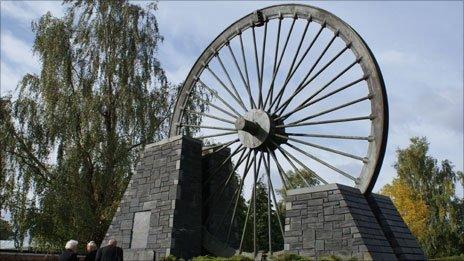New plaque for Pembrokeshire's 'forgotten' pit disaster
- Published
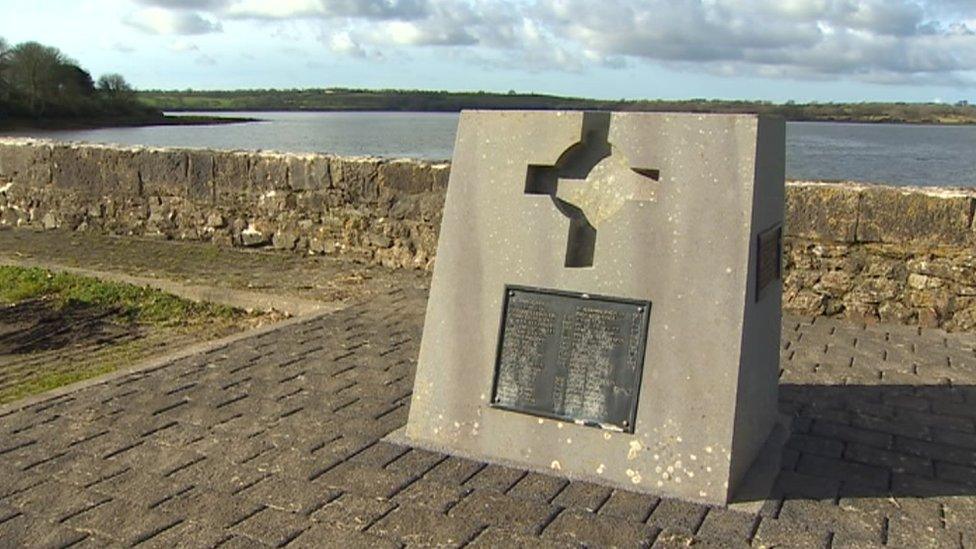
The new memorial overlooks the Eastern Cleddau river
A community is to gather to rededicate a memorial exactly 175 years after 40 people died in Pembrokeshire's worst mining disaster.
The waters of the Eastern Cleddau river broke through into the Garden Pit coal mine near Landshipping Quay on 14 February 1844.
Part of the mine actually ran below the estuary and it flooded within minutes
The majority of the casualties were boys and the youngest miner, Joseph Harts, was just four.
The children were never named because they were working in the mine illegally.
But researchers have finally found out who they were and added their names to a new memorial plaque.
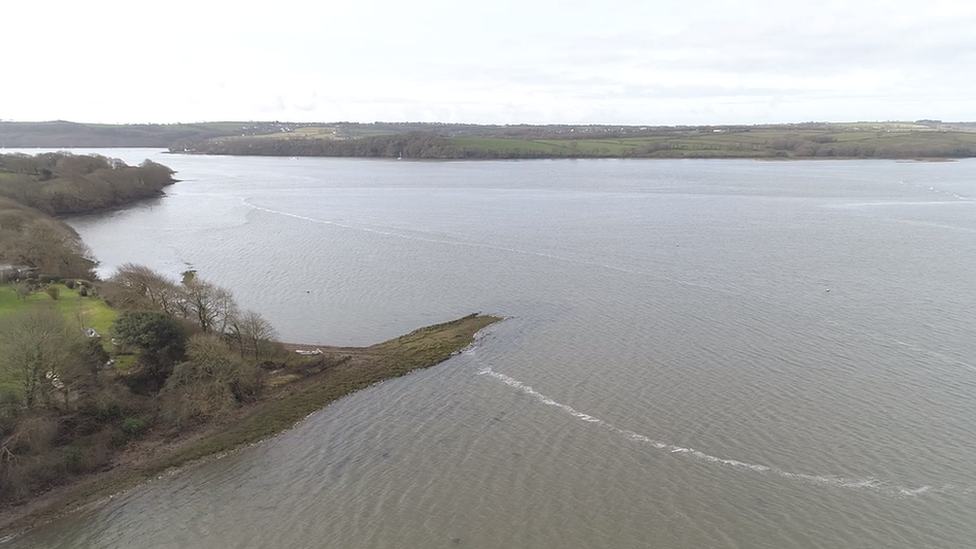
The bodies of 40 miners remain in the flooded mine beneath the Eastern Cleddau
Landshipping had been a considerable mining centre along with Kilgetty and Saundersfoot in the almost-forgotten Pembrokeshire coalfield.
Garden Pit had been opened in 1788 but around 1800, owner Sir Hugh Owen bought a steam engine for haulage and pumping, allowing the shaft to be sunk to 67ft (20.4m) and for a quarter of a mile out under the river.
It was said that the miners could actually hear the sounds of oars above their heads at high tide.
At about lunchtime on 14 February the miners left the workings because the amount of salt water seeping in was increasing.
But according to local historian Dr Rob Davies "the manager was told by the owner, Hugh Owen, to get it back up and running".
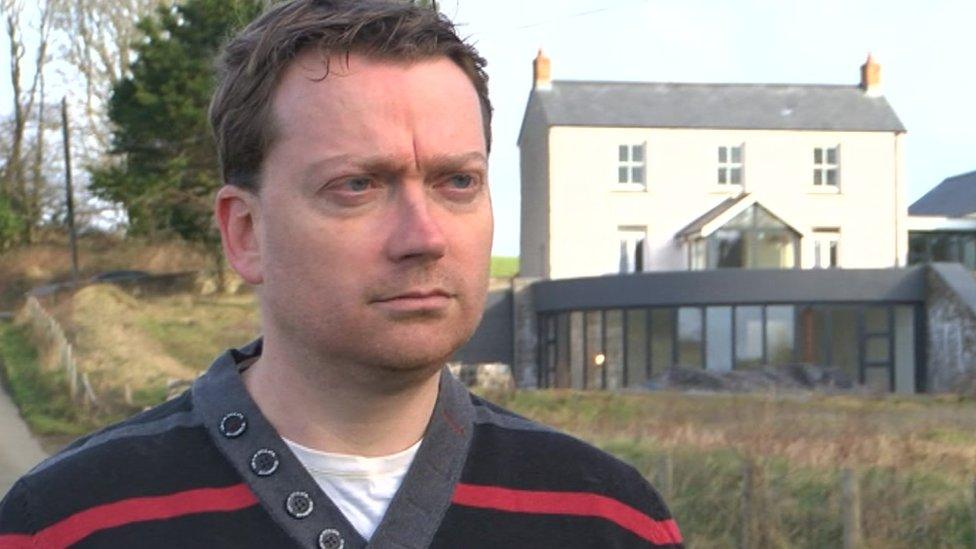
Mark Cole at the mine manager's house: "People forget that Pembrokeshire had a coalfield"
Mark Cole's great, great, great grandfather was the manager, James Cole.
"It's hard to comprehend that they could be sent out underneath an estuary as they were here," he said.
"The fact that they were so close that you could actually hear those above on the water is quite something to get your head around."
At about 15:30 GMT people reported seeing a series of whirlpools close to shore. The waters had finally broken through, inundating the mine.
A blast of air suddenly shot up the mine shaft as the water rose at more than 42ft (10m) a minute.
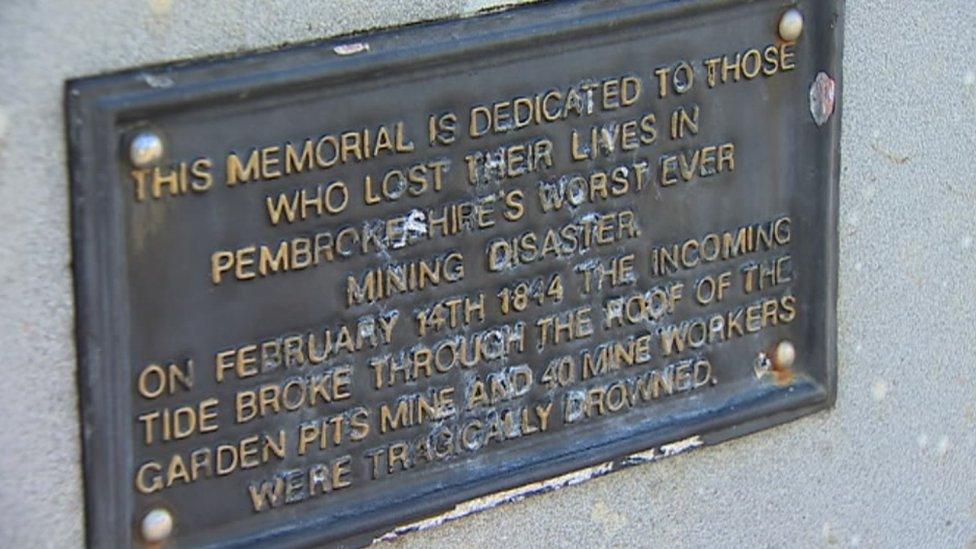
The memorial plaque commemorates the 40 men and boys who died
Miners appeared at the bottom of the shaft, screaming for help and four men and 14 boys were quickly hoisted up in the buckets that normally carried the coal.
But 40 were left trapped and they all drowned. Their bodies have never been recovered and still lie in the flooded pit.

Pembrokeshire's forgotten coalfield
Pembrokeshire's coalfield is a narrow strip running from Carmarthen Bay to St Bride's
The coal was in great demand as it was particularly high quality anthracite
Saundersfoot harbour was built in 1834 specifically to export coal
One of the first mentions of mining in Pembrokeshire was in the 14th Century near Saundersfoot
The last significant mine, Hook Colliery, was nationalised in 1947 but closed with the loss of 100 jobs when it flooded a year later.

The inquest held soon after has since been described as a cover-up. The mine's owner was an MP.
Parliament had passed the 1842 Mines Act two years earlier banning all women and girls and boys under 10 from working underground. They were not named at the hearing.
Dr Rob Davies has researched the history of the disaster and said that some of the miners were "positively" underage.
"One was eight and two were nine. There was a four-year-old and another two were ten," he said.
"Altogether, in today's thinking, 26 of them were children, in other words under 18 years of age. They were used simply because they were small enough to work in very small drifts that may have been only 4ft high so that they could crawl through.
"Conditions were pretty poor. There was very little done to support the miners. Health and Safety was not a priority."
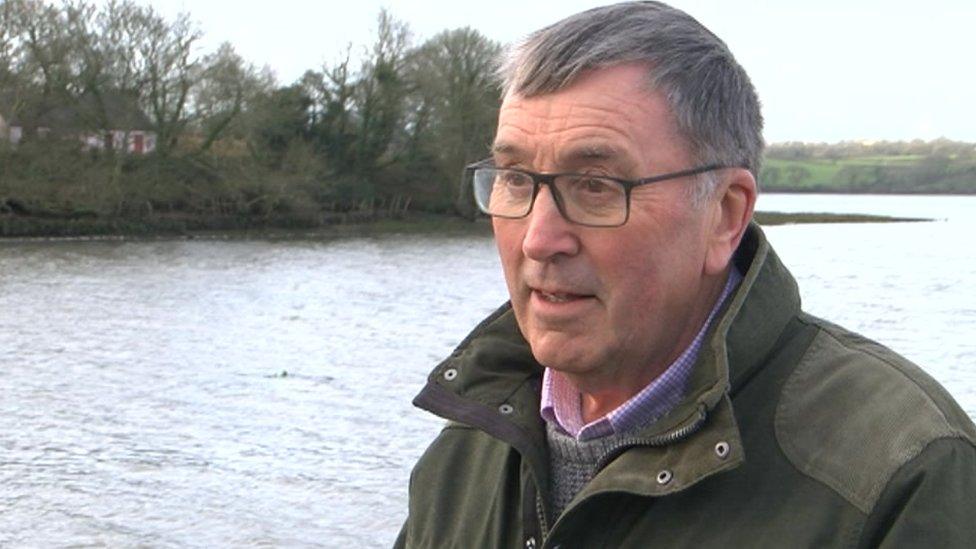
Dr Rob Davies: "It is important we remember because there are people below the river here that were forgotten"
Mark Cole actually lost another great, great, great grandfather at Garden Pit. James Davies, who drowned alongside his eldest son.
"It was a hammer blow to the future of this community. It never really recovered from 1844. Most of the families moved to the valleys," he added.
"It's quite a difficult thing to comprehend. We can't forget the greatest tragedy in the history of the Pembrokeshire coalfield."
A memorial service led by Rev Huw George and Dr Davies will be held on Thursday at Burnetts Hill chapel in nearby Martletwy, once used by the miners.
Local people will then walk by torchlight to the memorial for the rededication.
- Published14 October 2013
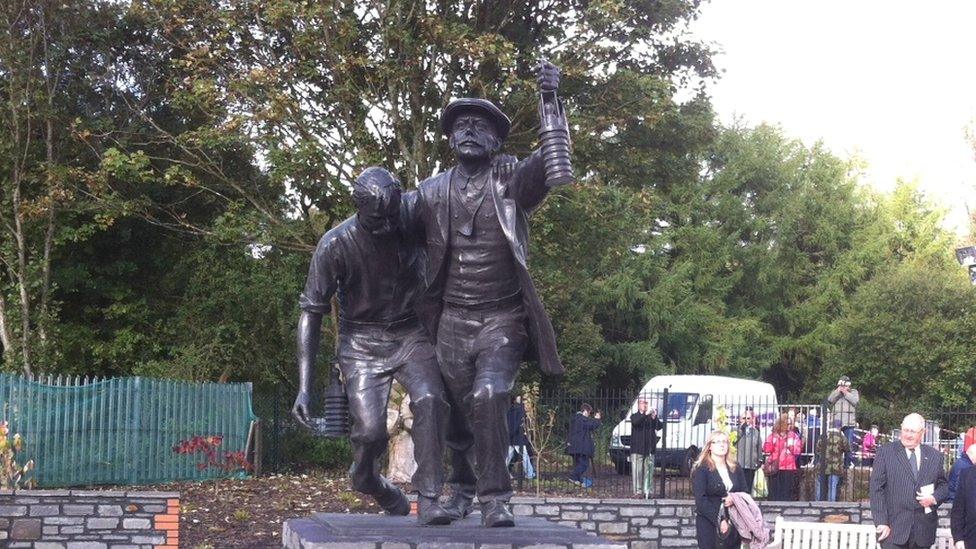
- Published22 September 2014
